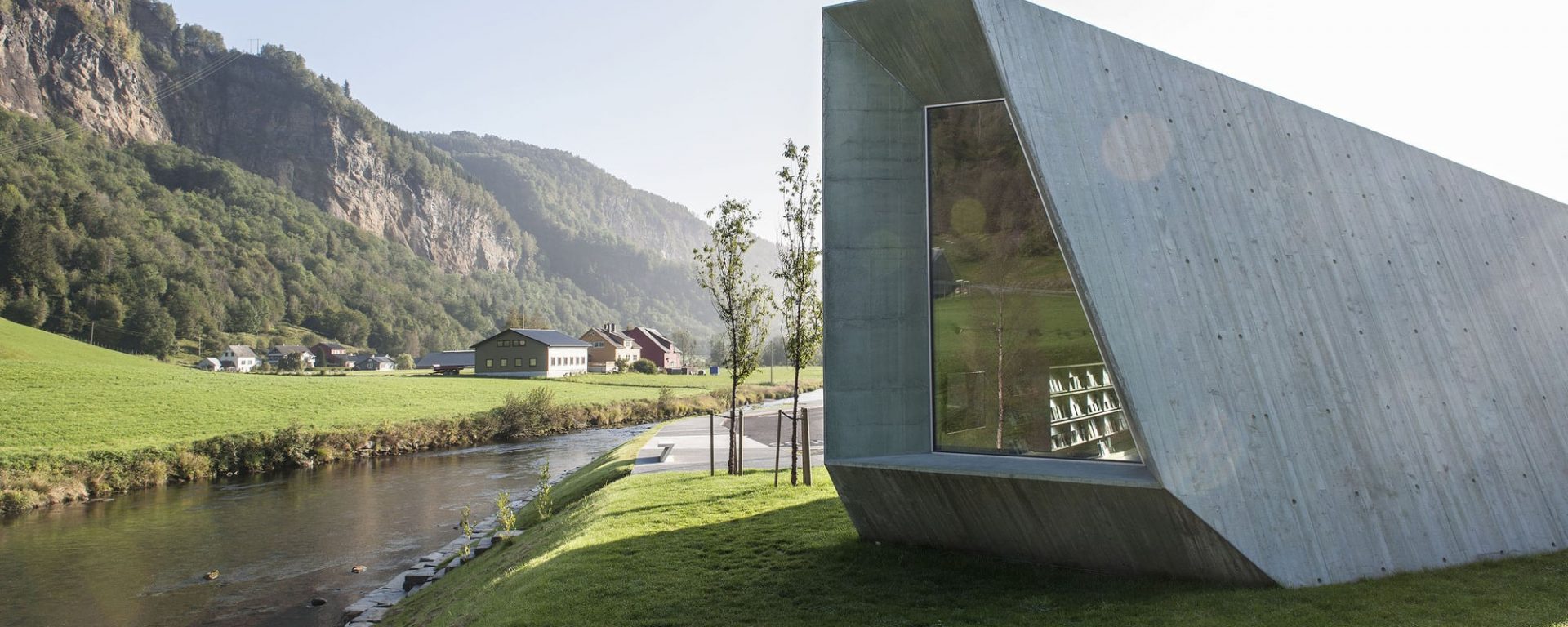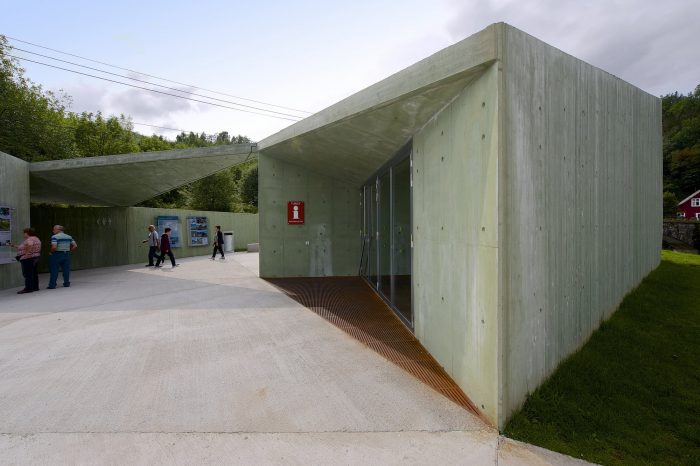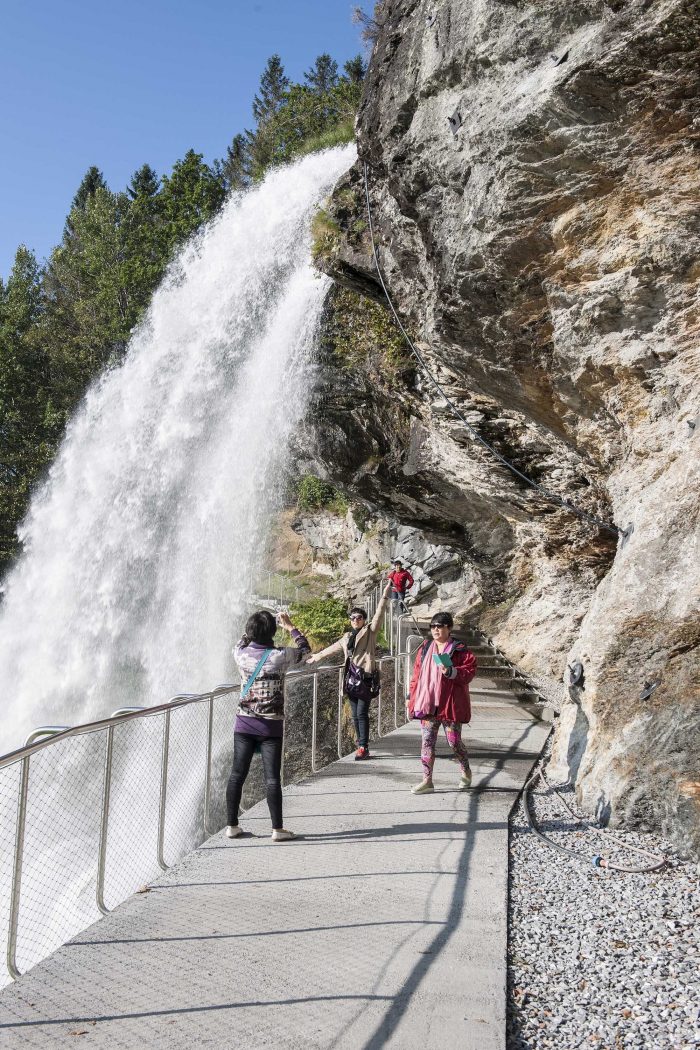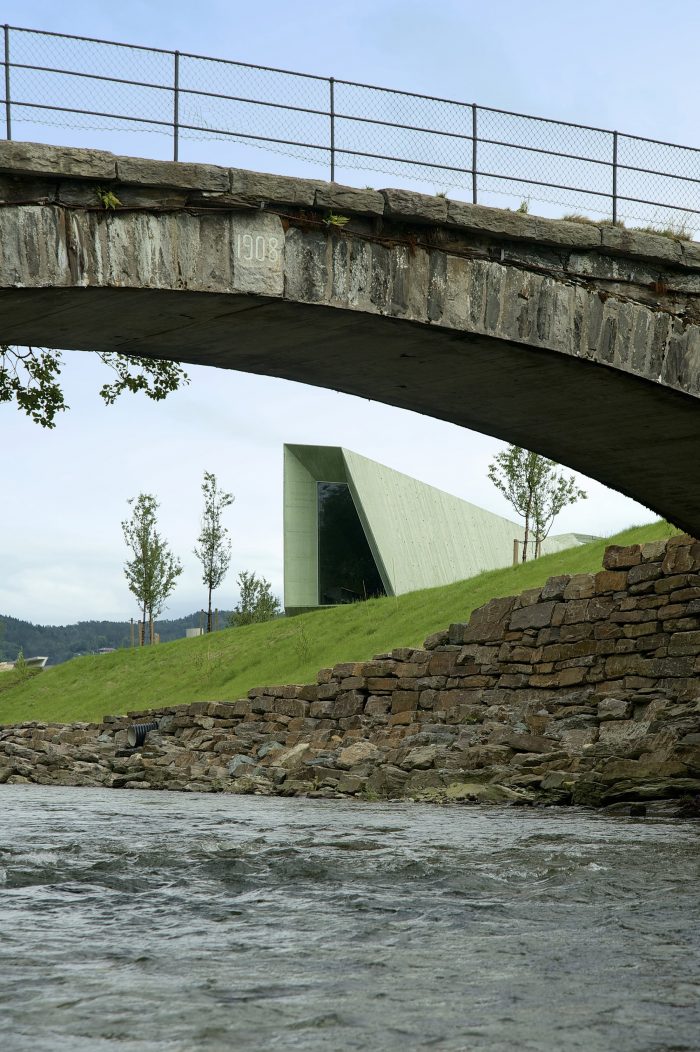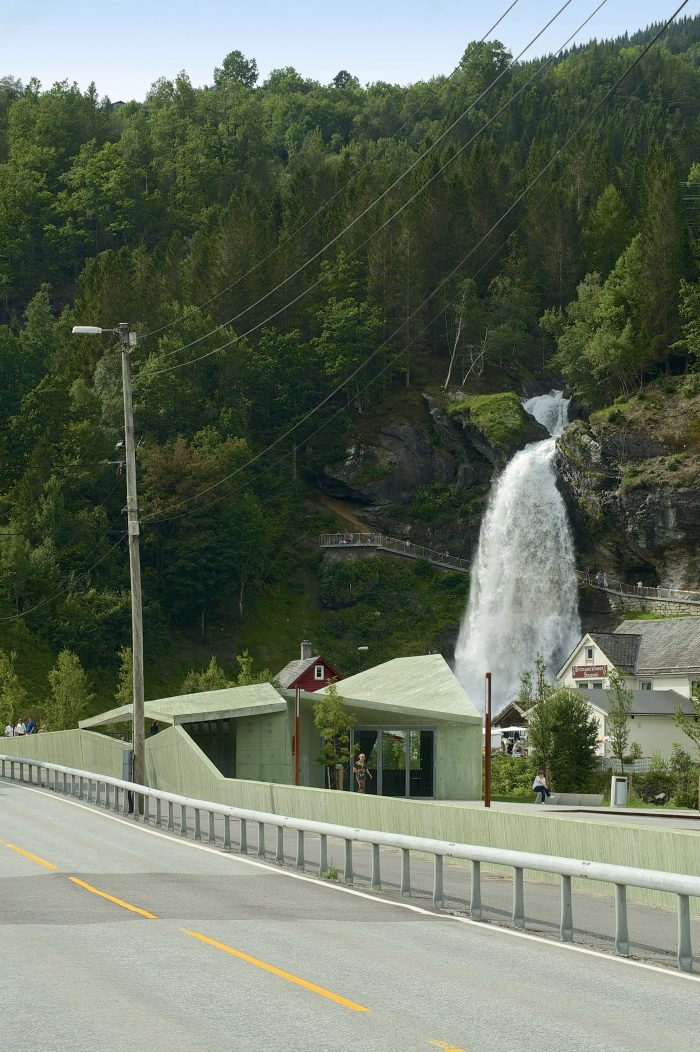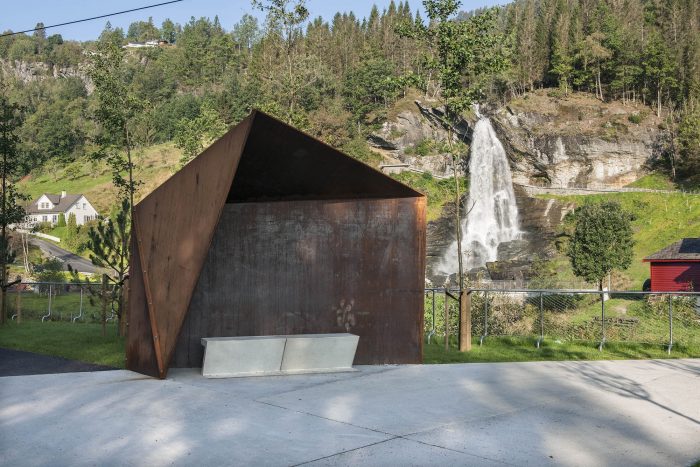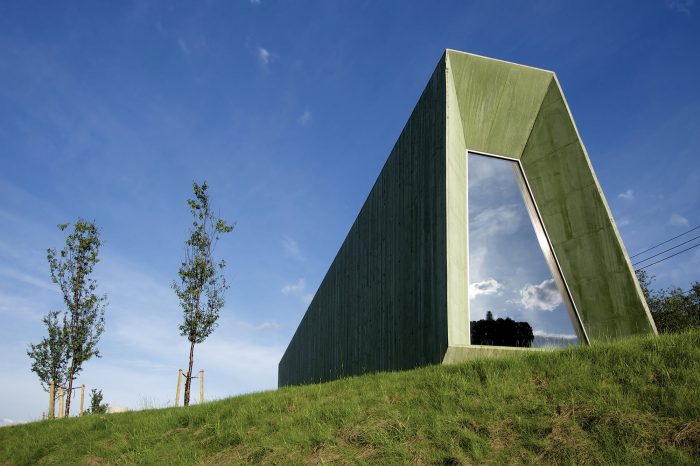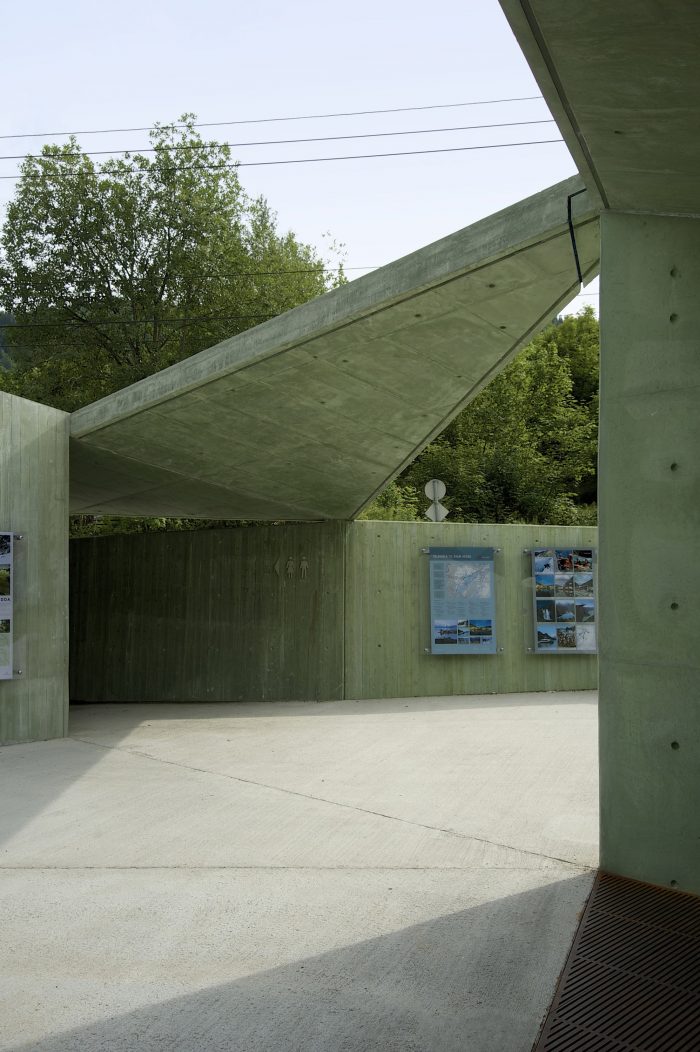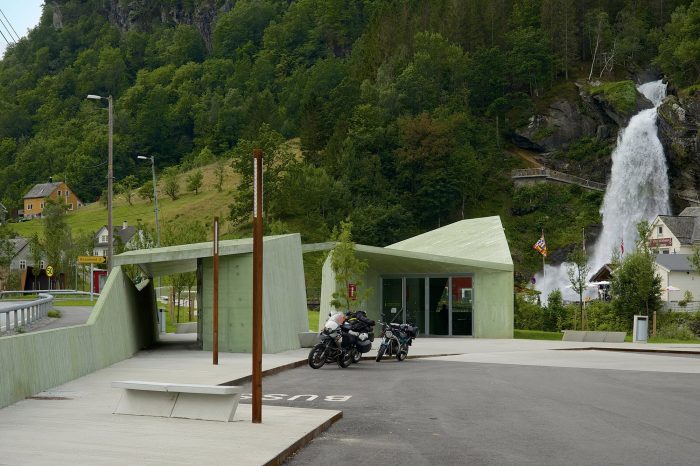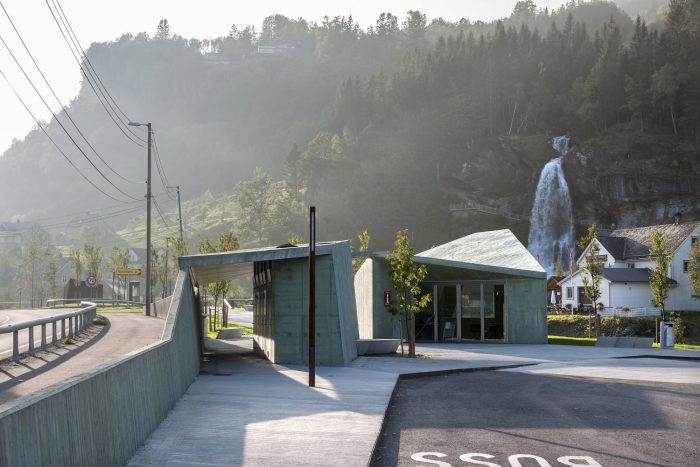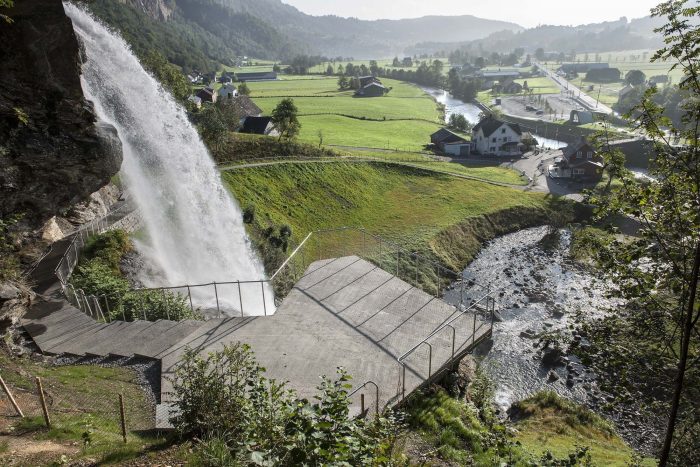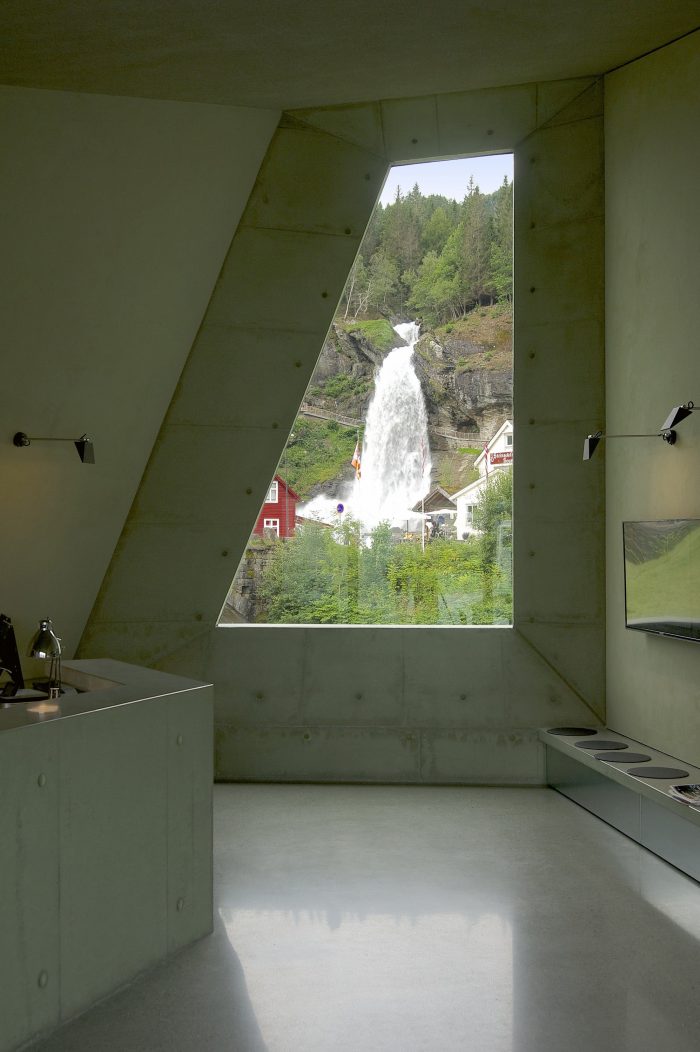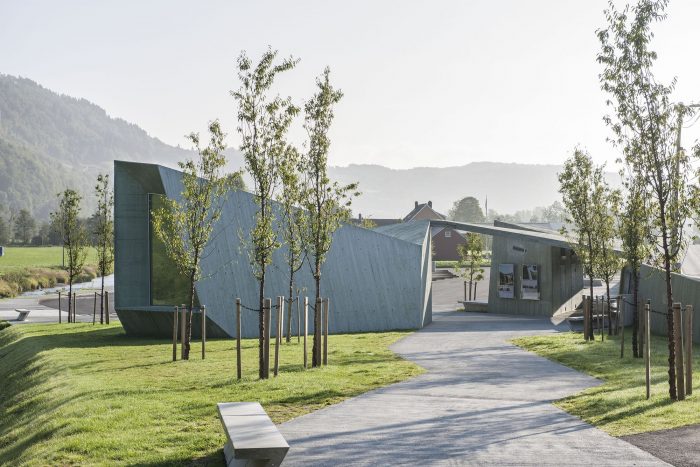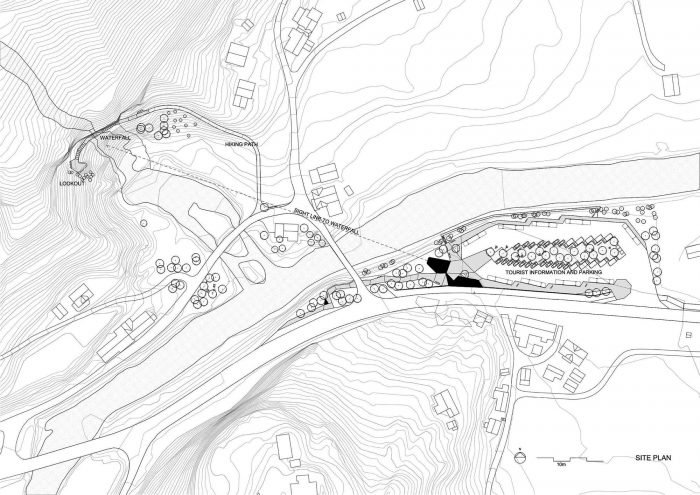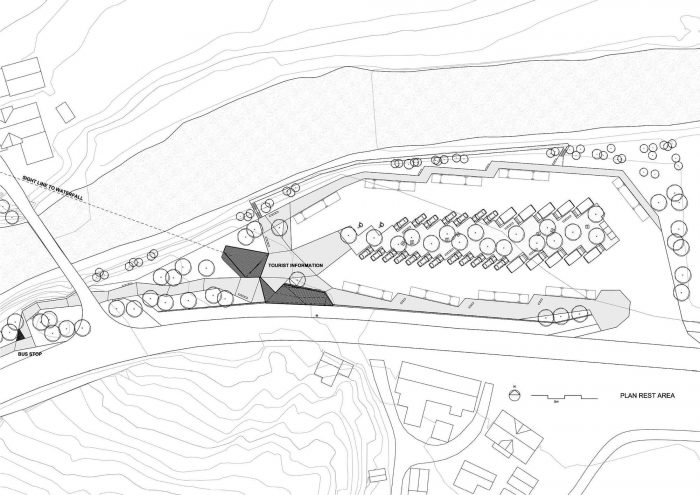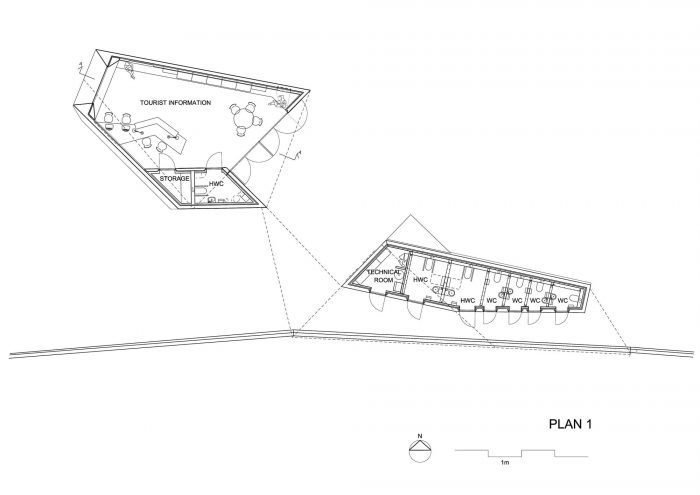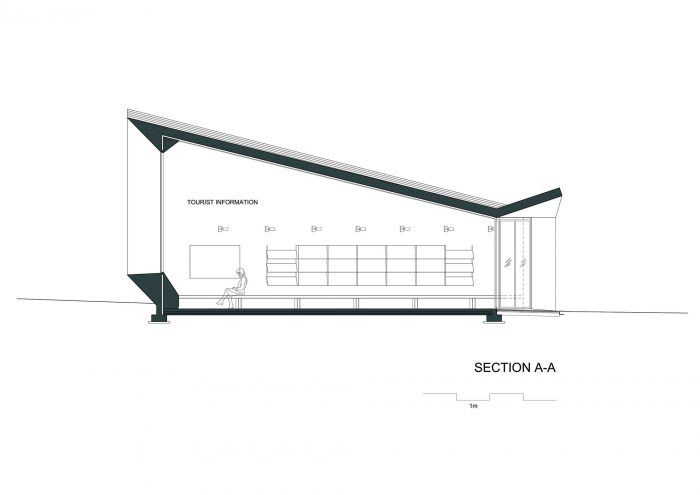挪威公共道路管理局受挪威议会和政府的委托,开发国家旅游路线,该路线由18条经过挑选的路段组成,穿过挪威美丽而多样的风景。其目的是通过用大胆的建筑来加强对壮丽自然风光的体验,将挪威变成一个对游客更有吸引力的目的地。
The Norwegian Public Roads Administration has been commissioned by the Norwegian Parliament and Government to develop the National Tourist Routes, consisting of 18 selected stretches of a road passing through Norway’s beautiful and varied landscape. The objective is to turn Norway into a more attractive destination for tourists, by enhancing the experience of the magnificent natural scenery with bold architecture.
Jarmund / Vigsnæs建筑事务所被委托开发位于哈当厄尔的Steinsdalsfossen的目的地。郁郁葱葱的植被、瀑布、山脉和冰川在该地区已经吸引了一百多年的游客。
Jarmund / Vigsnæs Architects was commissioned to develop the destination at Steinsdalsfossen, Hardanger. Lush green vegetation, waterfalls, mountains, and glaciers have in the area attracted tourists for more than a hundred years.
该项目包括一个带有旅游信息中心的停车区和一个厕所设施,以及一条通往主要景点的人行道。Steinsdalsfossen瀑布。
The project consists of a parking area with a tourist information center and a restroom facility in addition to a footpath leading to the main attraction: Steinsdalsfossen waterfall.
停车区和旅游设施的地点位于瀑布对面的河边,沿着一条交通道路的曲线。该项目旨在将自己融入景观中,同时将停车场和旅游设施与瀑布相连。该项目同时引导人们向瀑布看去,并为道路提供一个屏障。
The site for the parking area and tourist facilities is situated across the river from the waterfall, along the curve of a trafficked road. The project aims to integrate itself into the landscape while connecting the parking and tourist facilities to the waterfall. The project simultaneously directs views towards the waterfall as well as provides a barrier towards the road.
一面倾斜的混凝土墙被引入,以调和道路和停车场之间的水平差异。这面墙成为项目的脊柱,因为它一方面顺着道路的曲线,另一方面又是建筑的骨架。
A slanted concrete wall was introduced to mediate the difference in levels between the road and the parking area. This wall becomes the spine of the project as it follows the curve of the road on one hand while being the backbone for the buildings on the other.
厕所和旅游信息建筑是雕塑般的混凝土体量,通过有顶的室外空间与墙体相连。当这些体量逐渐脱离墙壁,扭曲并指向瀑布时,它们同时反映了道路的运动和瀑布的静态景观。
The toilet and tourist information buildings are sculpted concrete volumes physically connected to the wall through covered outdoor spaces. As the volumes gradually separate away from the wall, twisting and pointing towards the waterfall, they are reflecting at the same time the movement of the road as well as the static view of the waterfall.
在内部,这种扭曲使得旅游信息的内部被集中在通过一个大窗户看到的瀑布本身的框架上。在外部,这种扭曲在停车区和绿草坡道之间创造了一个门户,引导游客走向瀑布,同时也将休息区的景色集中到瀑布上。
Internally, this twist allows for the interior of the tourist information to be focused on a framed view of the waterfall itself through a large window. Externally, the twist creates a portal between the parking-area and the green grass ramp that leads the tourists towards the waterfall as well as focusing the views from the rest area towards the waterfall.
混凝土是这个项目的主要材料。原地混凝土使雕刻的建筑体量以一种不区分墙壁和屋顶的方式建造,使项目具有凝聚力的形式。此外,混凝土被赋予了含有二氧化铬的颜料,形成了绿色的表面。
Concrete is the main material of the project. In situ concrete allowed the sculpted building volumes to be constructed in a way that does not differentiate between walls and the roofs, giving the project a cohesive form. Furthermore, the concrete was given a pigment-containing chromium-dioxide, resulting in a green surface.
这种绿色将建筑与景观联系在一起,后者主要是绿色的田野和植被,以及春天时河流和瀑布的几乎是荧光的绿色。混凝土模具由粗大的木板制成,使体量在墙壁和屋顶的外部具有粗糙和统一的纹理。然而,面向有盖区域的天花板和墙壁被赋予了光滑的表面。
This green color links the building to the landscape, which is dominated by green fields and vegetation as well as the almost fluorescent green color of the river and waterfall in the springtime. The concrete molds were made of coarse planks to give the volumes a rough and uniform texture on the outside of the walls and roofs. However, the ceilings and walls facing covered areas are given a smooth surface.
休息区和旅游咨询处周围的人行区,以及通往瀑布的人行道和瀑布后面的人行道,都是由拉毛的灰色混凝土制成的,具有棱角的形状。灰色混凝土的框架和分区是由皮质钢条组成的。
The pedestrian areas around the rest-area and tourist information, as well as the footpath leading to and behind the waterfall, are made of brushed gray concrete with angular shapes. The grey concrete is framed and subdivided by strips of corten steel.
该项目的目的是不仅提供一个实用的休息场所,而且还提供一个戏剧性的自然体验,在这里,建筑能够以新的方式看到风景。
The project aims to deliver not only a practical break from life on the road but also a dramatic experience of nature where architecture enables new ways of seeing the landscape.
Architects: JVA
Area : 110 m²
Year : 2014
Photographs :Nils Petter Dale, Jiri Havran
Consultants : Grindaker AS, Multiconsult, Lysstoff AS
Primary Architects : Einar Jarmund, Håkon Vigsnæs, Alessandra Kosberg, Siv Hofsøy, Claes Cho Heske Ekornaas, Rakel Helling, Jens Herman Næss, Martin Blum-Jansen, Ane Groven
City : Bergen
Country : Norway

